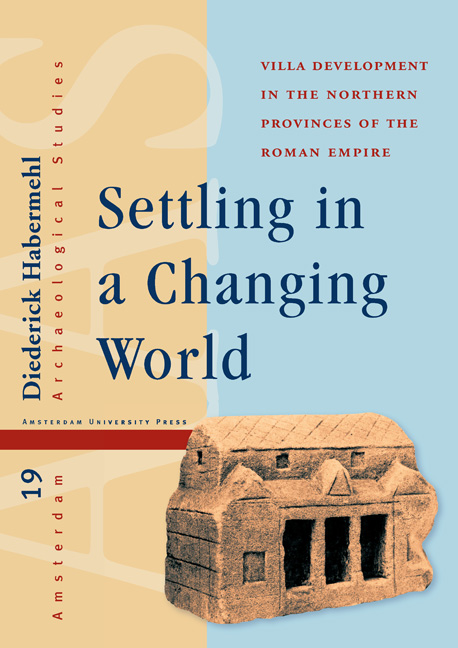Book contents
- Frontmatter
- Dedication
- Contents
- Preface
- 1 Introduction
- 2 Data and Research
- 3 Exploring Villa Development
- 4 Exploring the Social Villa. A Human Approach to Villa Development
- 5 Villa Development and the Organisation of Production
- 6 Settling in a Changing World: A Synthesis
- References
- Appendix 1 Site Catalogue
Appendix 1 - Site Catalogue
Published online by Cambridge University Press: 11 December 2020
- Frontmatter
- Dedication
- Contents
- Preface
- 1 Introduction
- 2 Data and Research
- 3 Exploring Villa Development
- 4 Exploring the Social Villa. A Human Approach to Villa Development
- 5 Villa Development and the Organisation of Production
- 6 Settling in a Changing World: A Synthesis
- References
- Appendix 1 Site Catalogue
Summary
In this appendix, the data that is at the basis of this study is catalogued and briefly described per site. Sites are organised per subregion and in alphabetical order. Per site record, the following characteristics are described:
site number
location and toponym
scale of research
period of research
short description of the site: character, development, chronology and special elements
reference
The site location is generally defined by means of a general location, in most cases a municipality, combined with a toponym, generally a street name, field name or the name of the development (project) related to the research. Scale of research is defined by rating letters A, B, C or D. The category of A-sites comprises large-scale excavations whereby complete settlements were excavated. Overall, good-quality chronological data on developments in settlement organisation and house building is available for these sites. The B-category contains partially excavated settlements. Here, excavation reaches beyond the level of the individual building, but the entire settlement complex is not documented. Sites classified in category C include settlements where only the main house was excavated. In many cases, the development trajectory of house building could be reconstructed. Lastly, category-D sites are fragmentarily excavated sites that nonetheless provide useful data on settlement morphology, chronology or development.
With regard to the period of research, a research period has been determined for each site, divided into three chronological groups: before 1950, 1950 to 1979, and after 1980. In the short description, some basic characteristics are described, especially focussing on basic morphology and development trajectories in settlement organisation and house building. Special elements could include bath sections, (monumental) graves or elements with a possible ritual function. Lastly, per site the main references are presented.
001 Beneden-Leeuwen, D, 2000s, periphery of a hypothetical villa settlement. Several traditional post-built houses could be dated between the first half of the 1st century AD and the Late Roman period. Special material culture included military equipment, import objects, tiles and tubuli as well as painted wall plaster. No structural traces of monumental house building were found, however, Vos 2003.
002 Breda-Steenakker/Huifakker, A, 2000s, two well-excavated settlement cores. At the Huifakkersite, several post-built houses could be dated to the 1st century AD.
- Type
- Chapter
- Information
- Settling in a Changing WorldVilla Development in the Northern Provinces of the Roman Empire, pp. 189 - 240Publisher: Amsterdam University PressPrint publication year: 2013



